Curb Ramps [§406]
Requirements for curb ramps apply to ramps that cut through curbs or are built up to them. New guidelines the Board is developing for public rights-of-way will further address curb ramps located along public streets and sidewalks, but they are not discussed in this guide. DOJ’s 2010 ADA Standards require curb ramps at newly constructed or altered streets, highways, and street-level pedestrian walkways to provide an accessible route for pedestrians at intersections (28 CFR 35.151(i)).
Curb Ramp Requirements [§406]
Transition to Street [§406.2]
Top Landing [§406.4]
The required landing at the top of curb ramps allows an accessible route to connect to the ramp opening. Side flares, where provided, are intended primarily to prevent tripping hazards, not to accommodate wheelchair maneuvering at ramps (except in alterations where sufficient landing space is unavailable). Side flare slopes cannot exceed 1:10 max. (or 1:12 max. in alterations where a top landing is unavailable).
Alterations: Ramp without Top Landing
In alterations where sufficient landing space is not available, side flares must be provided and cannot slope more than 1:12 to facilitate wheelchair maneuvering. Parallel curb ramps (page 12) provide an alternative in such conditions.
Top Landing Slope
The maximum slope of the top landing is determined by the configuration of connecting accessible routes.
Perpendicular Accessible Route Parallel Accessible Route
The cross slope of perpendicular connecting routes limit the slope of the ramp top landing to 1:48 (measured parallel to the running slope).
If the only connecting accessible route runs parallel to the ramp run, the top landing can slope 1:20 max.
Sides of Curb Ramps [§406.3]
Curb ramps can have returned sides, but a top landing is required under all conditions to allow maneuvering to and from the run.
Recommendations: To prevent tripping hazards, curb ramps with returned sides should be used only where foot traffic across ramps is prevented or discouraged.
Built-Up Curb Ramps
Built-up curb ramps are permitted, but they cannot project in parking spaces, access aisles, or vehicle traffic lanes. A top landing at least 36” deep is required at all built-up curb ramps.
Built-Up Curb Ramp with Side Flares
Side flares can be provided to prevent tripping hazards. Edge protection is not
specified for curb ramps.
Recommendations: Provide edge protection along the sides of built-up curb ramps to prevent tipping hazards. Otherwise, consider a wider ramp width (48” min.) so that maneuvering does not occur near drop-offs.
Parallel Curb Ramps
Curb ramps can be oriented parallel to sidewalks. This design provides an option where limited space precludes a top landing. A level landing 48” long minimum (60” preferred) accommodates maneuvering between runs and right-angle turns to connecting routes, such as parking access aisles and crossings.
Curb Ramps at Intersections
Curb ramps at marked crossings must be wholly contained within the crosswalk, excluding side flares. The Standards do not require crossings to be marked or address how they are to be marked, but public street crossings are addressed by the Manual on Uniform Traffic Control Devices (MUTCD) for Streets and Highways.
Curb ramps must be oriented so that the grade break is perpendicular to the curb ramp run to ensure a smooth transition to streets, including at corners with a wide radius. The curb ramp opening can be aligned with the curb line (left) or more directionally oriented to the crosswalk (right).
Diagonal Curb Ramps [§406.6]
If curb ramps are placed diagonally at an intersection, it is important that clear space 48” long min. is available at the bottom that is outside active vehicle traffic lanes and is located within marked crossings, where provided. A segment of curb at least 24” long beyond flares must be provided on both sides of curb ramps with side flares within marked crossings. This curb segment provides an orienting cue at crossings for people with vision impairments.
Recommendations: Perpendicular curb ramps are preferred over diagonal curb ramps. Unless the radius is large enough, it can be difficult to locate the clear space at the bottom of diagonal curb ramps that is outside active traffic lanes. The orientation also can mislead people with vision impairments who use curb slopes as a cue to crossings.
Raised Crossings
Raised crossings, where provided, eliminate the need for curb ramps while serving to reduce traffic speeds. Consult local Standards for application requirements, including slope for vehicle traffic, height, and markings.
Islands [§406.7]
A 48” min. long separation is necessary between curb ramps so that people using wheelchairs can clear one ramp before negotiating the next. Level cut-throughs provide an effective alternative, especially at narrow islands that will not accommodate opposing curb ramps with a 48” separation.
Island with Curb Ramps
Island with Cut-through
Detectable Warnings [§406.8 (DOT’s Standards), §705]
Detectable warnings are required on curb ramps at transit facilities covered by DOT’s Standards (facilities used by state and local governments to provide designated public transportation services, such as rail stations and bus stations). They are not required at non-transit facilities subject to DOJ’s Standards. DOT also requires detectable warnings on curb ramps in projects funded by the Federal Highway Administration. New guidelines the Board is developing for public rights-of-way will address requirements for detectable warnings at curb ramps and other transitions along public streets and sidewalks where hazards to people with vision impairments are greater.
Where detectable warnings are required (or provided anyway) they must meet specifications for size, spacing, and contrast. These detailed criteria provide a distinctive texture intended to have a uniform meaning in alerting persons to the approach to vehicular areas (as well as drop-offs along rail station platforms).

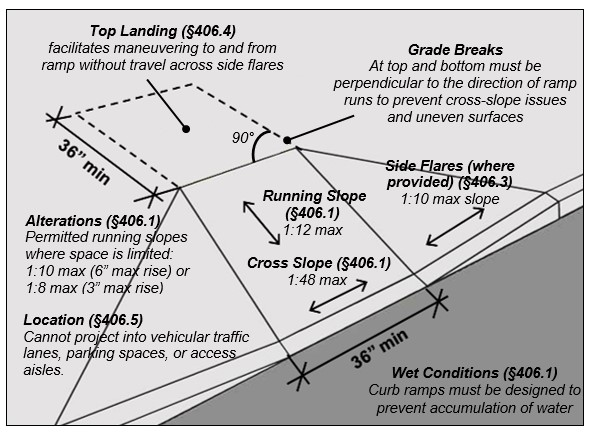

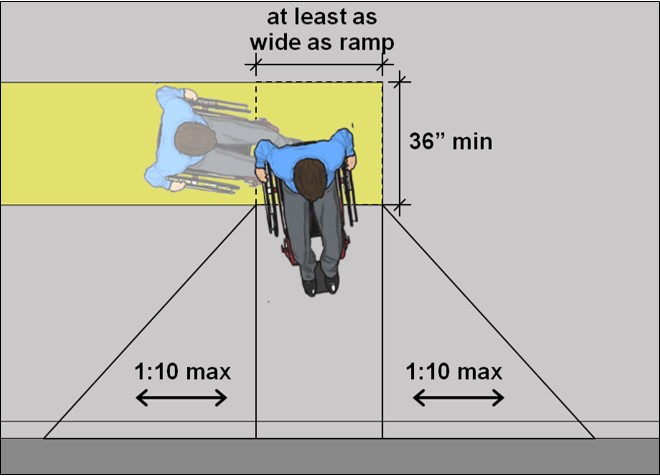
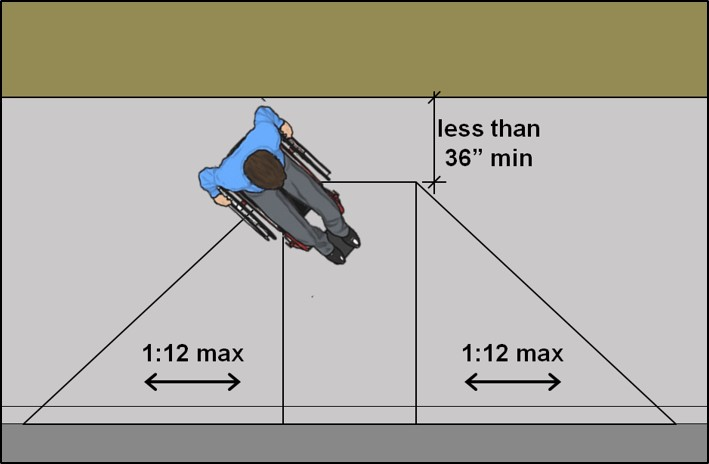
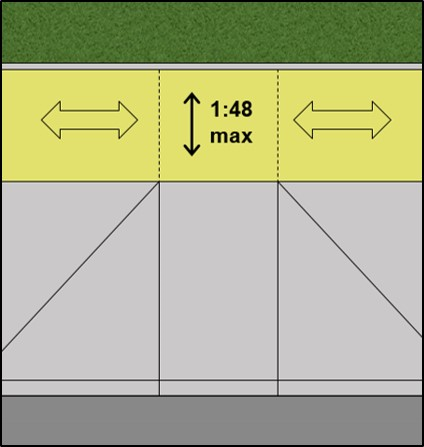
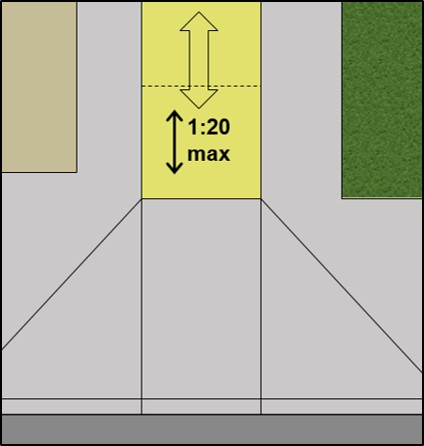
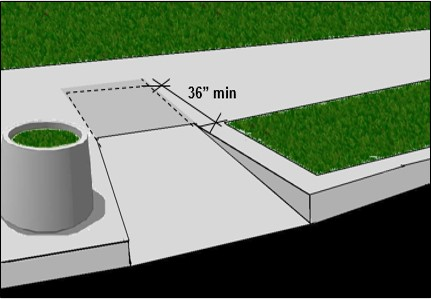

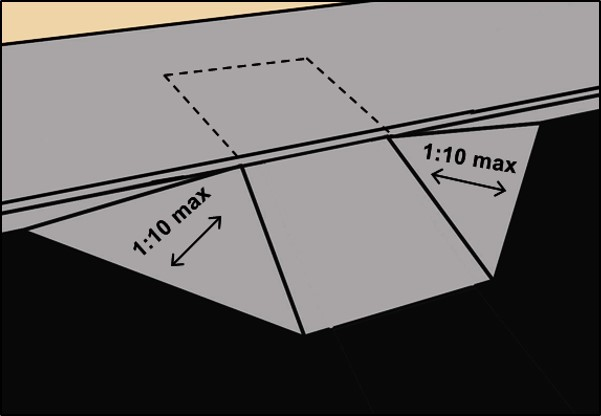

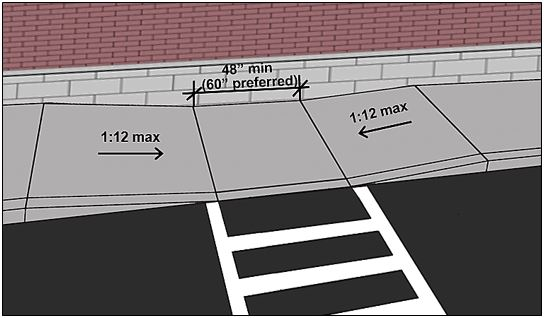
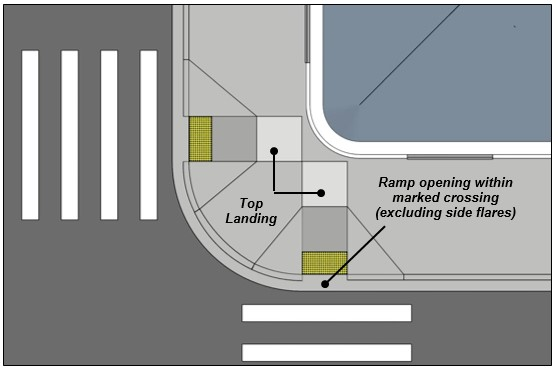
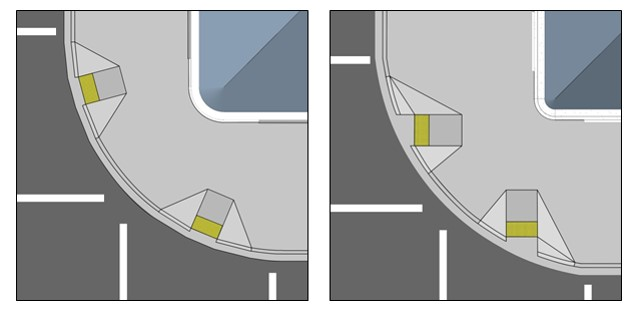
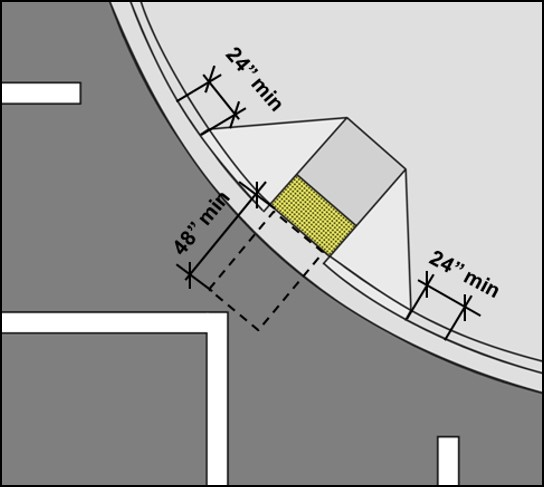

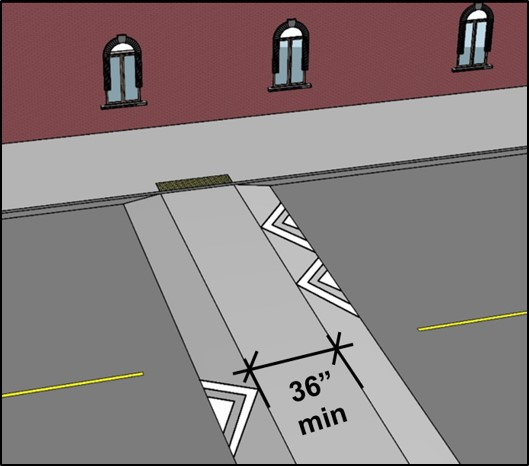
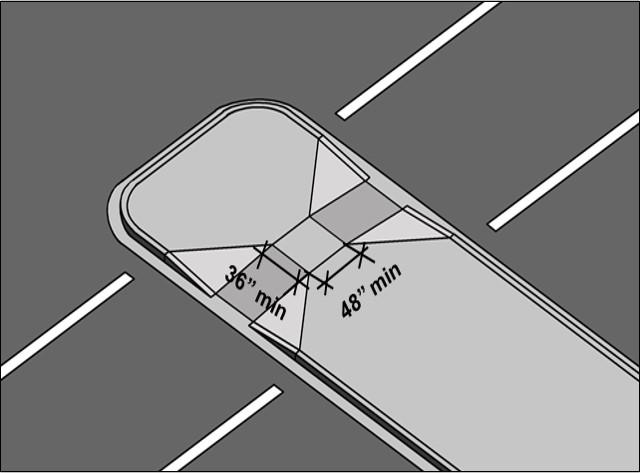
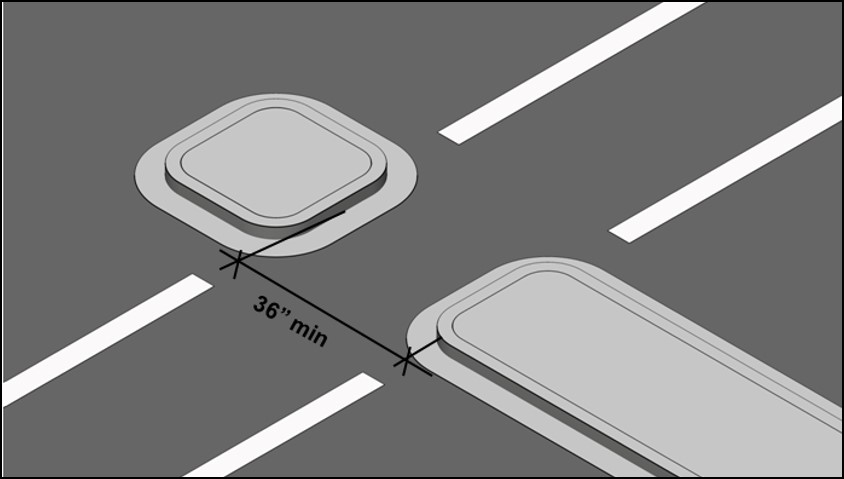

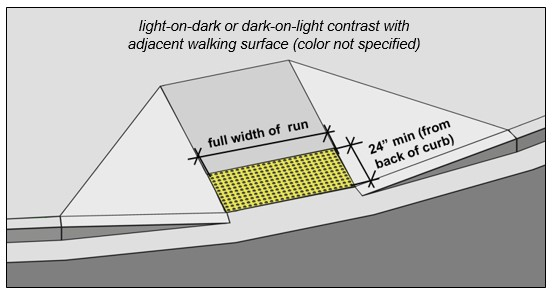
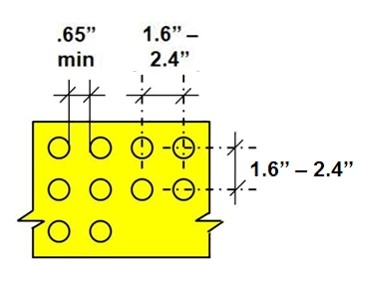
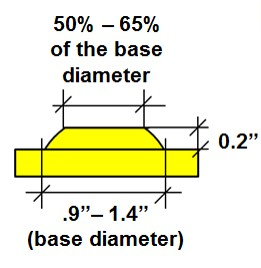
User Comments/Questions
Add Comment/Question